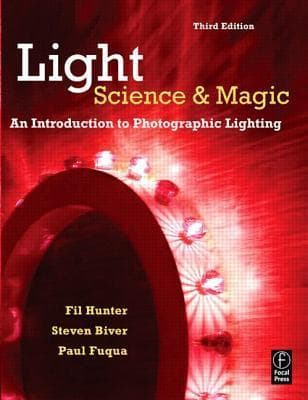
Book Review Summary: Light: Science and Magic: An Introduction to Photographic Lighting
Introduction
"Light: Science and Magic: An Introduction to Photographic Lighting" is a highly respected guide that has been thoroughly updated and revised for content and design. This book introduces a logical theory of photographic lighting, allowing readers to predict results before setting up lights. Unlike other photography books that focus solely on how-to examples, this book provides a comprehensive theory of the nature and principles of light, enabling readers to express their own creativity through lighting. With numerous photographs and illustrations, this book provides clear examples of the theories and highlights special lighting questions.
About Fil Hunter
Fil Hunter is the author of "Light: Science and Magic: An Introduction to Photographic Lighting." As a renowned photographer, Hunter has a wealth of experience in the field of photography. His expertise in lighting is evident in this book, which has been praised for its comprehensive coverage of the subject.
Analysis of Views
- Comprehensive Theory: Readers appreciate the book's comprehensive theory of photographic lighting, which goes beyond providing recipes for various shoots. Instead, it teaches readers the underlying mechanisms of lighting, allowing them to build their own setups and express their creativity.
- Wide Range of Photographic Fields: The book covers various photographic fields, including people, landscapes, products, and more. This diversity helps readers understand the fundamentals of lighting across different genres, making it a valuable resource for photographers of all levels.
- Balance Between Humor and Seriousness: The authors maintain a good balance between humor and seriousness in their explanations, making the book engaging and easy to understand. Readers appreciate the authors' ability to convey complex concepts in a simple and accessible manner.
- Inspiration for Learning: Many readers find this book inspiring, as it encourages them to learn more about lighting and understand its principles. The book has been praised for its ability to spark curiosity and motivate photographers to practice and experiment with lighting.
- Technical Detailedness: Some readers appreciate the technical detailedness of the book, as it provides in-depth explanations and practical advice for handling challenging photo scenarios. However, others find the technical side too complex or overwhelming for their taste.
Reasons for Recommendation
- Comprehensive Theory: Readers recommend this book for its comprehensive theory of photographic lighting, which goes beyond providing recipes for various shoots. The book teaches readers the underlying mechanisms of lighting, allowing them to express their own creativity through setups.
- Wide Range of Photographic Fields: The book covers various photographic fields, providing a comprehensive understanding of lighting across different genres. This diversity makes it a valuable resource for photographers of all levels.
- Balance Between Humor and Seriousness: The authors maintain a good balance between humor and seriousness in their explanations, making the book engaging and easy to understand. Readers appreciate the authors' ability to convey complex concepts in a simple and accessible manner.
- Inspiration for Learning: Many readers find this book inspiring, as it encourages them to learn more about lighting and understand its principles. The book has been praised for its ability to spark curiosity and motivate photographers to practice and experiment with lighting.
Reasons for Not Recommendation
- Technical Detailedness: Some readers find the technical detailedness of the book overwhelming or too complex for their taste. They prefer books that provide simpler recipes or set examples for copying.
- Aesthetics: A few readers express dislike for the book's cover design or find it unattractive compared to other photography books they have seen. However, most readers agree that the content is worth overcoming any aesthetic concerns they may have.
Conclusion
"Light: Science and Magic: An Introduction to Photographic Lighting" by Fil Hunter is a highly respected guide that provides a comprehensive theory of photographic lighting. The book covers various photographic fields and offers a balance between humor and seriousness in its explanations. Readers recommend this book for its ability to teach fundamentals, inspire learning, and provide practical information for executing techniques. However, some readers find the technical detailedness overwhelming or prefer simpler recipe-based books. Overall, "Light: Science and Magic" sets a high standard for understanding and mastering photographic lighting and is a valuable resource for photographers seeking to enhance their skills in this area.